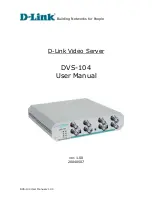
report
(continued)
summary function
237
specifying
135
types
135
using F13 to display layout
8
using F5 to display
8, 169
restriction
migration definitions
197
result field
adding
86
CCSID (coded character set identifier)
252
character
60
character constant
60, 66
column heading
85
concatenation (||) operation
60
creating
57
date
66
decimal position
85, 188
defining
DBCS
187
unique name
57
differences between Query/36 and Query for
iSeries
196
example of defining
86
expression
character
60
numeric
59
operator
58
length
85, 188
multilingual environment
naming conventions
58
naming
58
numeric constant
59
numeric fields
59
other data types
68
removing
86
SUBSTR (substring) function
61
time
66
timestamp
66
tips and techniques
235
result fields
decimal precision
190
results
checking query
8
returning to Define the Query Display
30
rounding numeric field value
164
rule
function
char
74
concatenation
60
DATE
75
day
75
days
76
digits
62
hour
76
microsecond
77
minute
77
month
78
second
78
SUBSTR (substring) function
61
time
79
rule
(continued)
function
(continued)
timestamp
79
value
62
year
80
joining files
44
Run Query (RUNQRY) command
11, 171
run-time record selection
CCSID (coded character set identifier)
251
running query
8
example
206
Exit This Query display
169
interactively
limiting
243
Query for iSeries menu
169
Query Utilities menu
11
RUNQRY (Run Query) command
171
using F5
169
with a different language
115
Work with Queries display
13, 170
RUNQRY (Run Query) command
11, 171
S
saving query definition
167
SECOND function
argument rules
78
syntax diagram
78
secondary file
definition
238
multiple join file considerations
49
used in file join operations
43
secondary file sequencing rule
example of correct method
50
example of incorrect method
51
rules for correct joins
49
Select and Sequence Fields display
87
Select Collating Sequence display
113
Select Definition Type (IDDU) display
200
Select File display
37
Select Member display
40
Select Record Format display
41
Select Records display
CCSID (coded character set identifier)
97
comparison field
92
comparison tests
91
select/omit criteria
43
Select Report Summary Functions display
136
Select Sort Fields display
105
Select System Sort Sequence display
118
Select Translation Table display
116
select/omit access path
232
select/omit criteria
primary records
43
selecting
collating sequence
111, 113
field for query
87
performance recommendations
235
files for a query
Select File display
37
Specify File Selections display
33
276
Query for iSeries Use V5R2
Summary of Contents for @server iSeries
Page 1: ...iSeries Query for iSeries Use Version 5 SC41 5210 04 ERserver ...
Page 2: ......
Page 3: ...iSeries Query for iSeries Use Version 5 SC41 5210 04 ERserver ...
Page 12: ...x Query for iSeries Use V5R2 ...
Page 14: ...2 Query for iSeries Use V5R2 ...
Page 32: ...20 Query for iSeries Use V5R2 ...
Page 38: ...26 Query for iSeries Use V5R2 ...
Page 44: ...32 Query for iSeries Use V5R2 ...
Page 116: ...104 Query for iSeries Use V5R2 ...
Page 122: ...110 Query for iSeries Use V5R2 ...
Page 146: ...134 Query for iSeries Use V5R2 ...
Page 150: ...138 Query for iSeries Use V5R2 ...
Page 174: ...162 Query for iSeries Use V5R2 ...
Page 178: ...166 Query for iSeries Use V5R2 ...
Page 196: ...184 Query for iSeries Use V5R2 ...
Page 198: ...186 Query for iSeries Use V5R2 ...
Page 204: ...192 Query for iSeries Use V5R2 ...
Page 205: ...Part 4 Appendixes Copyright IBM Corp 2000 2002 193 ...
Page 206: ...194 Query for iSeries Use V5R2 ...
Page 210: ...198 Query for iSeries Use V5R2 ...
Page 242: ...230 Query for iSeries Use V5R2 ...
Page 256: ...244 Query for iSeries Use V5R2 ...
Page 270: ...258 Query for iSeries Use V5R2 ...
Page 272: ...260 Query for iSeries Use V5R2 ...
Page 292: ...280 Query for iSeries Use V5R2 ...
Page 293: ......
Page 294: ... Printed in U S A SC41 5210 04 ...







































